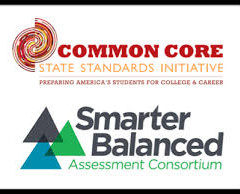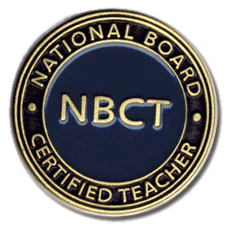We are thrilled to have guest bloggers from time to time at Stories from School, and this offering is from Michelle Carpenter who is a MC-Gen National Certified Board teacher in Walla Walla, Washington. She teaches fifth grade and blogs about teaching, running and motherhood.
When one of our own is going into administration, we’ve all said it. “You’re going to the dark side?” “You are switching teams?” “You’re going to become THEM?” I’m just as guilty as the next.
For years, I have been told, “You would make a great administrator.” Not only did I not know what that meant, I didn’t know to ask, “What do you mean by that?” Normally, I just smiled and carried on, assuming that my organization and Type A personality was what they were referring to. I was always the one willing to take on any given task.
The fact is, when I started to continue my education, I felt a shift inside. I know that we need to view teachers as the experts; even when they might not see themselves as such. We need teachers to step up to leadership roles and be the voice for our students. We need to reach beyond our comfort zones and start having conversations with school board members, legislators and community members. They must be in our schools to understand the demands facing education today at the grass roots level. I knew I could do this and was feeling more and more confident in my ability to do so.
When I earned my Masters Degree and Professional Certification, I did a lot of reading, research and paper writing. I gained useful knowledge from that experience. It was when I earned my National Board Certification, that I felt the true change in me and how I positively impacted the teaching profession.
I was being asked to look deeply at my teaching. To question how I was affecting student’s learning and to think about how I could improve. I couldn’t do it alone. I needed colleagues, mentors and supervisors to help me understand the right questions to ask. I suddenly realized that there wasn’t one right answer, but there were a TON of right questions available to ask! During this time, I found myself in the position to do the same for my fellow colleagues pursuing their National Board Certification. I knew that I didn’t have the answer to their queries, but I could certainly offer some questions to help them seek an answer. I felt more “professional.” I knew that I had skills to share. And I felt more confident taking on district leadership roles.
One of my high school teachers, who I had remained friends with, kept planting the seed in my ear. “You are a great leader. You should take it to the next level.” I thought that meant chairing committees, mentoring teachers and continuing to earn those clock hours. I did all of those things. I enjoyed all of those things. But still, I just didn’t want to become one of “them.”
I’ve been doing this long enough (20+ years) that I have seen a lot of demonstrations of what administration means. I take the good and leave the rest. In fact, I’ll be honest. For the first 10 years of my career, I thought I knew what was best. And I did — for my lil’ class of 25 students. But I certainly wasn’t considering the larger picture or the players involved. That’s what time on your feet and in front of those eyes does for you. I have had administrators who were heavy handed, who were more bosses than leaders and controlling. I’ve had administrators who stayed in their office, didn’t have a voice and avoided the hard conversations. I knew education was changing and that none of the above were making a positive change in education.
And then we got a new principal in our building, and I felt, well … INSPIRED. Inspired to push my limits, to look deeply at my teaching with colleagues and to dream big. I spent the summer listening to and talking with a wide network of people — people who work at the community college, people who work at universities and people within our own district. The picture was becoming more and more clear. Education needs leaders who empower others; who weren’t afraid of tough conversations and who have a vision of change they are willing to sustain. National Board Certified teachers have been trained to do this.
I took advantage of leadership seminars, started reading books and looked into administrative programs. I earned scholarships to pay for my continuing education and I am currently enrolled at Gonzaga University moving full steam ahead. I know that the certificate at the end is going to be awesome. But this journey–right now–is pretty amazing in and of itself. I am meeting new people, seeing things from a new perspective and am taking this experience straight back into my classroom each and every day. I am using my skills from the National Board certification process with purpose. I reflect on conversations I’ve had, think about how it impacts student learning and am finding my voice in this changing role. Teachers need advocates. Teachers need to feel empowered. I can do this.
I may be going to the “dark side,” but it’s my plan to light that side up with clarity, inspiration and hope. What started out as a flashlight, has gained power and is becoming a flood light. At whatever level I work at, I know I can be the change and continue to provide the best education possible for students. Because at the end of the day, we are only at our best when we are on the same team with clear goals, reflective practices in place and effective communication.
I know I am going to make mistakes along this journey. How I learn from those and improve from those experiences are what count. It’s going to be hard. I’m sure there will be disappointments, frustrations and pure exhaustion. However, I feel the responsibility to my four sons; my current 24 students; and the thousands of students I’ve had and that are coming in the future. Ensuring the best education possible and having staff members that share the same vision because they are believed in, makes this calling even more important to me.
So as I heard this fall, “You’re going to the dark side?” I said, “There is no dark side. I will always be a teacher, no matter what the title. I’m following my heart. We are all in this together. The only way to change is to have people who are willing to light up this team. When administrators and teachers are leaders, students will always prevail. I’m in. Are you?”

 My son graduated from high school yesterday. I’m very proud of him, of course; he’s a smart, talented kid with enormous potential and a music scholarship to the University of North Texas. He will go far.
My son graduated from high school yesterday. I’m very proud of him, of course; he’s a smart, talented kid with enormous potential and a music scholarship to the University of North Texas. He will go far. By Tom
By Tom

 By Tom
By Tom


